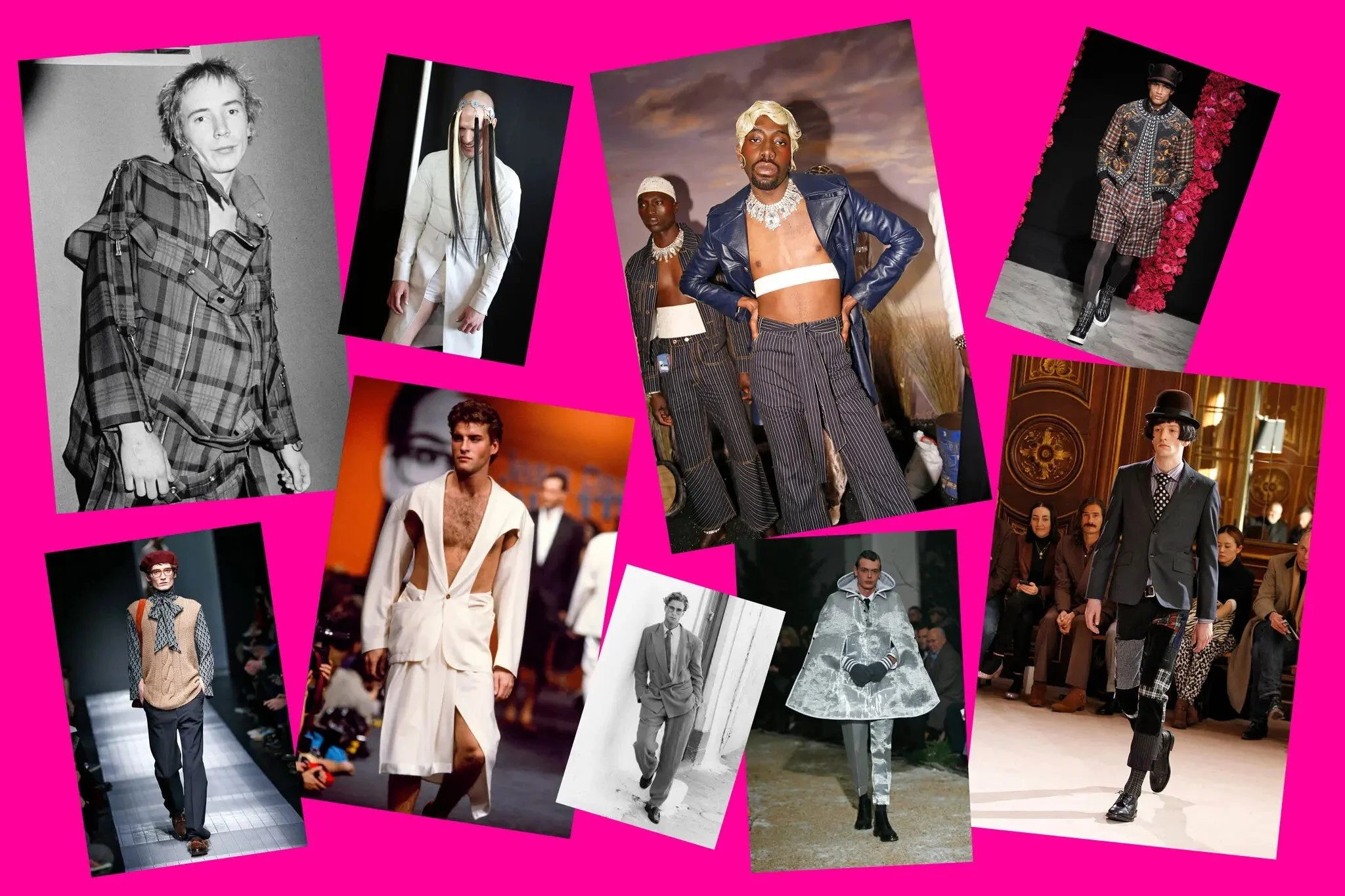T magazine: The 25 Men’s Fashion Collections That Changed the Way We Dress
18. Gucci by Alessandro Michele, Fall 2015
According to legend, in January 2015 — following the surprise departure of Frida Giannini, Gucci’s creative director since 2006 — Alessandro Michele, who had previously served as Giannini’s associate, scrapped the men’s wear collection that she’d been working on and pulled together an entirely new one in just five days. From the moment the first model came out in Milan wearing a red silk pussy-bow blouse with loose cotton pants and fur-lined sandals, it was clear that the Italian designer had cast aside Giannini’s jet-set aesthetic in favor of his own vintage-inspired vision. Romantic and exuberantly androgynous, the collection featured wool berets, skinny scarves and lace tops, all worn by willowy models. Two days after his first men’s show, Michele was appointed creative director of the brand, a position he would hold for nearly eight years before stepping down in 2022. As Frank Bruni wrote for T in 2018, “He isn’t just selling robes, slippers, handbags, things, though he certainly wants customers to buy those, which they’ve done in numbers that have returned Gucci to peak cultural relevance and extraordinary financial success. He’s selling a sensibility: eccentric, eclectic, inclusive.” (And one that was exuberantly bizarre: he’d sometimes send out models with their identical twins or carrying silicone heads that looked just like theirs.) Only two months after being announced as the creative director of Valentino this past March, Michele unexpectedly dropped a resort collection of 171 ready-to-wear looks
Louis Vuitton by Virgil Abloh, Spring 2019
In June 2018, Virgil Abloh, Louis Vuitton’s newly appointed artistic director of men’s wear — and the first Black artistic director in the house’s 164-year history — staged his first show. With the sun beating down on Paris’s Palais-Royal, the American designer, a trained architect and founder of the streetwear brand Off-White, sent a cast of ethnically diverse models (and a few musician friends like Kid Cudi, Steve Lacy and Playboi Carti) down an ombré rainbow runway in sharply tailored suits with puffer jackets and hoodies. He turned bags, wallets and card holders into apparel, merging them with holsters, vests and harnesses. And in titling the show We Are the World — a reference to the 1985 charity single written by Michael Jackson and Lionel Richie — and inviting 1,500 students of all ages to sit alongside front-row regulars like Rihanna and ASAP Rocky, he made a powerful statement about the future of the industry. “There are people [here] who look like me,” he told the Times. “You never saw that before in fashion.” Abloh’s own story ended abruptly in 2021 when he died of cancer at age 41.
Dries Van Noten, Fall 2016
Over the course of his 38-year career, the Belgian designer Dries Van Noten created a colorful, poetic style that pulled inspiration from different cultures and eras. At his fall 2016 men’s wear show, that rich-bohemian romanticism found its ideal habitat: the Palais Garnier opera house in Paris, a venue that he’d been trying to book for 15 years. He told Vogue at the time that he wanted to create a collection that matched its grandeur. “For me it was really good to be able to show here onstage and not in a room,” he said. “It turns your world a little bit upside down.” According to the show notes, Van Noten based the clothes on a central character that he referred to as a “Peacock Peacenik,” and looked to the psychedelic imagery of the 1960s to inform many of his designs. Some coats were covered with swirly, hallucinogenic graphics by the artist Wes Wilson, who designed fliers for Ken Kesey’s original acid tests, others with military ribbons and symbols. Van Noten’s spring 2025 men’s wear show this past June was his last one. In a letter posted to his fans, he wrote, “My dream was to have a voice in fashion. That dream came true.”
Grace Wales Bonner, Fall 2015
Since launching her brand a decade ago, the British Jamaican designer Grace Wales Bonner has approached her work as an exploration of ancestry and identity. In January 2015, when she was 24, she debuted her clothes, which bring together indigenous craft techniques, including Indian quilting, Ghanaian beading and Burkinabe weaving with Savile Row-like tailoring, as part of the emerging designer showcase Fashion East at London Fashion Week. Wales Bonner — who has since curated exhibitions at New York’s Museum of Modern Art and London’s Serpentine North Gallery — sought inspiration for the collection, titled Ebonics, in the work of Black writers and artists like Langston Hughes and Marlon Riggs. She subverted expectations about gender and class with combinations such as a silk cummerbund with a pinstriped-denim suit and a halter top with high-waisted trousers or a mushroom-colored, crushed velvet suit embellished with cowrie shells and Swarovski crystals.
Craig Green, Spring 2015
In 2012, when the British designer Craig Green founded his label after graduating from Central Saint Martins in London, he attracted attention with provocative elements like face masks made from wooden planks, which the press ridiculed. But for his spring 2015 show, Green stripped back the conceptual statements and focused instead on the construction, telling Dazed magazine that he wanted the clothes “to feel beautiful, in a way.” The core of the collection was a utilitarian workwear jacket made of cotton, nylon and tarpaulin that he interpreted in a limited palette of white, black and a supersaturated cornflower blue. Worn by barefoot models who emerged to a melancholic soundtrack that included the Irish New Age singer Enya, the garment looked almost delicate, with strings that tied at the front. Elsewhere, it was reimagined as padded armor and paired with loose, karate-style trousers that evoked the work of Yohji Yamamoto. Several members of the audience were seen in tears.





